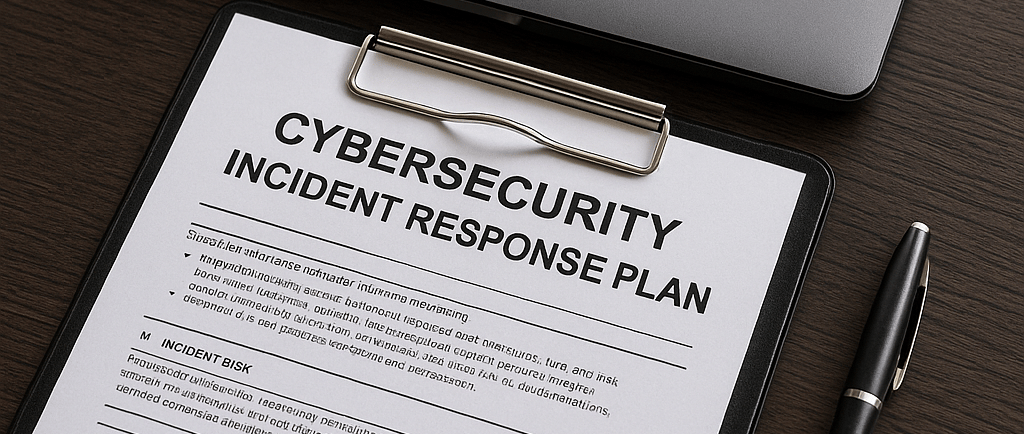Resilience by Design: Cyber Crisis Preparedness for Global Enterprises
In a world where cyber threats are constant and global operations never sleep, resilience is no longer optional. It’s a competitive advantage.


Resilience by Design: Cyber Crisis Preparedness for Global Enterprises
In a world where cyber threats are constant and global operations never sleep, resilience is no longer optional. It’s a competitive advantage. For modern enterprises, resilience isn’t just about technology or uptime — it’s about how quickly and confidently you can respond to disruption without losing customer trust, operational control, or brand momentum.
That’s why true cyber resilience must be designed into the DNA of the business. It requires executive-level ownership, regular crisis simulations, and incident response strategies that don’t just detect and defend — they adapt, recover, and lead.
This post explores how global organizations can move from reactive posture to proactive readiness by embracing the core practices of cyber crisis preparedness: executive tabletop exercises, tested response plans, and integrated business continuity.
Why Resilience Matters More Than Ever
Cyberattacks are no longer rare events. They are business events. Ransomware, supply chain breaches, insider threats, and third-party vulnerabilities are impacting brands every week — and the speed of escalation is only increasing.
But the real cost isn’t just data loss or downtime. It’s erosion of trust. It’s distraction from mission. It’s executive misalignment in the heat of the moment.
That’s why resilience isn’t just about how secure your systems are. It’s about how prepared your people are.
The Role of Executive Tabletop Exercises
Resilience begins at the top. Tabletop exercises are structured, scenario-based discussions that walk leadership teams through simulated cyber crises. They are not technical drills — they are executive alignment tools.
Done right, tabletop exercises:
Test communication channels and decision-making protocols
Expose gaps in roles, readiness, and resource allocation
Build confidence across C-suite, legal, comms, and operations
Strengthen the board’s oversight of cyber risk
The goal isn’t to solve everything in the room. It’s to rehearse the chaos in a way that sharpens coordination and improves instincts.
Tips for success:
Include real-world scenarios tied to your business model
Make the experience cross-functional: CISO, CIO, CMO, Legal, HR, etc.
Use external facilitators to challenge assumptions
Capture after-action insights and track improvements
Tabletop simulations are not a checkbox. They’re a leadership habit.
Incident Response Planning: From Document to Drill
Many companies have incident response (IR) plans. Fewer have ones that are current, tested, and known by key stakeholders.
Your IR plan should:
Define roles clearly (who leads, who decides, who communicates)
Map escalation paths across time zones and departments
Integrate legal, privacy, and regulatory considerations
Include contact details, notification templates, and logging procedures
But the plan is only useful if it lives in practice. That means:
Conducting quarterly simulations (beyond tabletops)
Reviewing playbooks after real incidents
Creating muscle memory through repetition
Response planning is not about perfection. It’s about velocity and confidence under pressure.
Business Continuity: Connecting Risk to Recovery
Business Continuity Planning (BCP) extends beyond IT. It answers the question: How do we keep serving our customers when things go wrong?
Cyber resilience and business continuity must be linked. This includes:
Identifying critical processes and their interdependencies
Defining RTO (Recovery Time Objective) and RPO (Recovery Point Objective) thresholds
Coordinating with third parties and suppliers
Ensuring communication continuity (internal and external)
Resilient enterprises treat BCP as a business enabler, not a compliance artifact. They embed continuity thinking into product design, supply chain strategy, and customer support planning.
Metrics That Matter: Measuring Crisis Readiness
To maintain momentum, track readiness with operational metrics:
Time from incident detection to executive notification
Number of completed and documented tabletop exercises per year
Average time to restore critical services
% of staff trained on their role in the IR plan
Also, include qualitative indicators:
Leadership confidence scores
Post-exercise engagement and learning feedback
Board feedback on crisis posture maturity
Readiness isn’t static. Measure to improve, not just to report.
Embedding a Culture of Resilience
Technology helps, but culture sustains. Leading enterprises foster resilience through:
Psychological safety to escalate early
Recognition for secure, thoughtful behavior
Storytelling about past incidents and learnings
Leadership modeling calm and accountability in crises
When people understand that resilience is about empowerment, not blame, they take ownership. And that ownership becomes your greatest asset.
Final Thoughts: Resilience Is a Leadership Discipline
In a global enterprise, disruption is inevitable. The question is: when it hits, will your organization lead through it, or lag behind it?
Resilience by design means preparing leadership, testing systems, and aligning strategy before a breach ever occurs. It means recognizing that cyber crises don’t just test your security stack — they test your brand, your culture, and your coordination.
Organizations that invest in executive simulations, living response plans, and integrated continuity strategies don’t just recover faster. They earn trust, retain loyalty, and come back stronger.
About the Author
Tyson Martin is a cybersecurity and digital trust leader who helps global brands design secure, resilient operations and build executive confidence in times of uncertainty.
